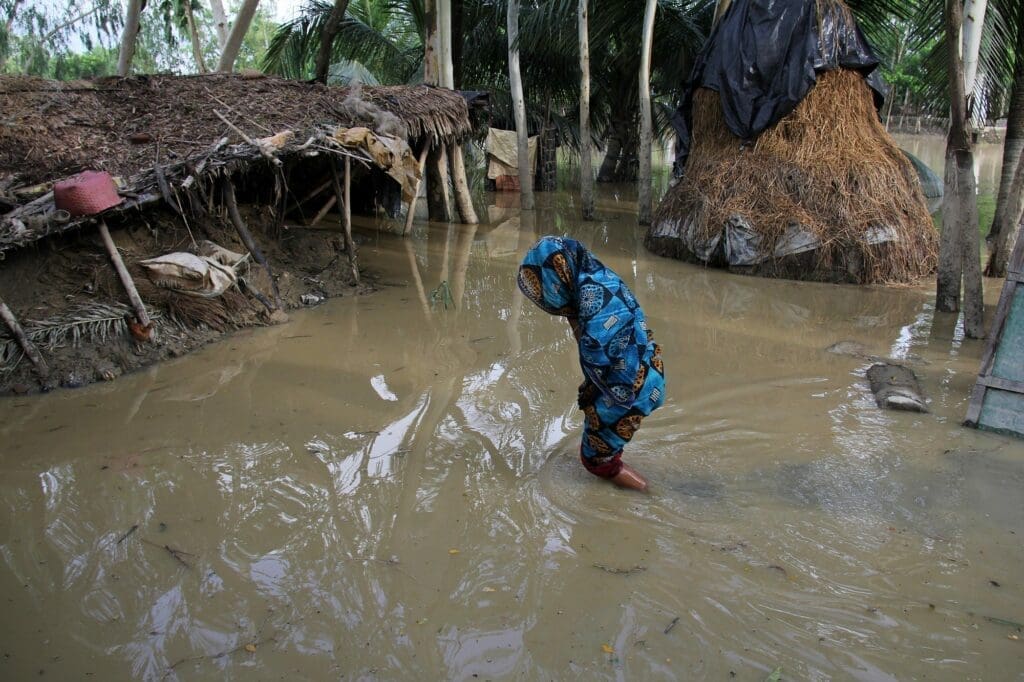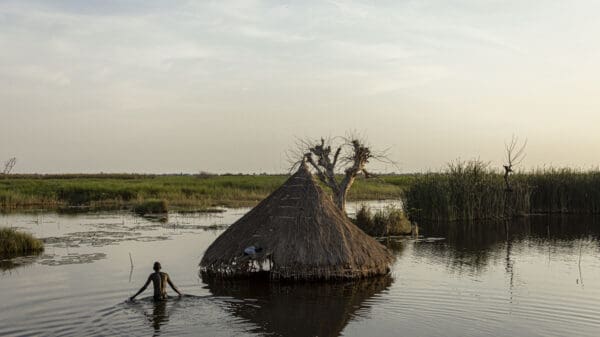
Talking with WFP’s El Niño Expert

Since early 2014, climatologists have been predicting one of the worst El Niño seasons of the last fifty years.
If predictions are correct, it could have serious consequences for food production, the availability of clean water, demand for labor and even the spread of disease.
Right now, WFP is working with a global team of climate scientists, food security analysts, and disaster preparedness experts to predict and prepare for the impacts of El Niño around the world.
World Food Program USA recently sat down with Richard Choularton, head of WFP’s Climate and Disaster Risk Reduction Programmes Unit, to get the scoop on how WFP is preparing for what a NASA scientist recently called “The Godzilla El Niño.”

So what exactly is El Niño?
The term “El Niño” describes a weather phenomenon in which warm water in the Pacific Ocean affects air circulation in the surrounding atmosphere, increasing winds and driving rainfall. As this “blob” of warm air and water moves it affects weather patterns around the globe.
Central America, Southern Africa and the Philippines typically face strong droughts, while South America and the Horn of Africa see flooding and droughts. Warm water also feeds hurricanes making storms like Hurricane Patricia stronger.

How might this year’s El Niño affect WFP’s work solving global hunger and how is WFP preparing for its impact?
WFP has a long history of analyzing the risks to food security from climate disasters and environmental degradation. In the last five years, we have made significant steps forward in understanding the links between food security and climate change. Using data collected over the last 30 years, we’ve been able to better understand how food assistance needs shift during El Niños.
Armed with this information, we can determine the best regions to preposition food in the event of a disaster and where we should buy staple crops from so that we can get them at a good price. Ultimately we’re looking at the whole system — from producers to consumers — to better support those who are at most risk of being affected.
How does this year’s El Niño relate to climate change?
It’s still unclear within the scientific community how El Niño patterns and climate change affect one another. We do know that climate change has caused temperatures to rise, which subsequently warms our oceans, particularly in the Pacific where El Niño conditions form. We also know that both climate change and El Niño are correlated with an increase in the frequency of floods or droughts globally.
Many of the world’s poorest families—who are dependent on regular dry and wet seasons — live in areas that are already at a higher risk for these kinds of natural disasters. If this year’s El Niño turns out to be as destructive as some are predicting, the livelihoods of millions could be destroyed.

What are some of the more unexpected consequences of El Niño?
El Niño conditions can reverberate throughout poor communities by sparking disease and even impeding livestock trade. For example, River Valley Fever (RVF) — an acute, fever-causing virus — thrives from unusually heavy rainfall.The disease is generally found in eastern and southern Africa, where sheep and cattle are raised, as well as in most of sub-Saharan Africa, including West Africa and Madagascar. When those areas flood, which often occurs during an El Niño, they become the perfect breeding grounds for mosquitoes — which carry the virus — to multiply, increasing transmission of RVF.
While both people and animals are susceptible to the infection, livestock tend to bear the brunt of its wrath. This means that beyond the health consequences of contracting RVF, livestock trade is often curbed, harming the livelihoods of local populations.
Why should Americans care?
The last massive El Niño in 1997 resulted in an estimated $35 billion in damages and about 23,000 deaths worldwide. So, we know that this El Niño won’t just disrupt WFP’s operations, it could impact the entire world’s food supply. And as climate scientists are predicting increasingly volatile weather, these challenges will become even larger. We’ll need all hands on deck to keep the destructive consequences of severe weather at bay.




